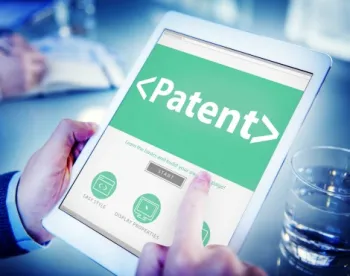Last week, the Federal Circuit held computer memory system patent claims not abstract and thus patent-eligible under Section 101, reversing a lower court dismissal of the case under Rule 12(b)(6). Visual Memory LLC v. NVIDIA Corp., No. 2016-2254, 2017 U.S. App. LEXIS 15187 (Fed. Cir. Aug. 15, 2017).
U.S. Patent No. 5,953,740 (“the ‘740 patent”) describes a memory system that can be tailored for use with multiple different processors without reducing performance. Id. at 3. The ‘740 patent explains that when “the [memory] system is turned on, information about the type of processor is used to self-configure the programmable operational characteristics.” Visual Memory, No. 2016-2254, slip op. at 4. “For example, depending on the type of processor, internal cache 16 can store both code and noncode data, or it can store only code data.” Id. at 4. Claim 1 recites the following:
- A computer memory system connectable to a processor and having one or more programmable operational characteristics, said characteristics being defined through configuration by said computer based on the type of said processor,
wherein said system is connectable to said processor by a bus, said system comprising:
a main memory connected to said bus; and
a cache connected to said bus;
wherein a programmable operational characteristic of said system determines a type of data stored by said cache.
Applying Alice step one, the district court held that the claims were directed to the abstract idea of categorical data storage.
The Federal Circuit disagreed. Id. at 9. The majority articulated that step one asks “whether the claims are directed to an improvement to computer functionality versus being directed to an abstract idea.” Id. at 7. The majority compared this case to Enfish and Thales and explained that “[a]s with Enfish’s self-referential table and the motion tracking system in Thales, the [‘740 patent] claims here are directed to a technological improvement: an enhanced computer memory system.” Id. at 10 (quoting Enfish, citing Thales Visionix Inc. v. United States, 850 F.3d 1343 (Fed. Cir. 2017)). Judge Stoll explained that the ’740 patent’s “use of programmable operational characteristics that are configurable based on the type of processor” is a “specific asserted improvement in computer capabilities” and underscored that the specification explained that “multiple benefits flow from the ’740 patent’s improved memory system.” Id. at 9-10. The majority distinguished this case from Content Extraction and TLI Commc’ns because “[a]lthough the claims [in those cases] recited the use of a phone and a server to carry out the claimed method, the claims did not ‘describe a new telephone, a new server, or a new physical combination of the two’…[and here,] the claims in the ’740 patent recite an allegedly new, improved, and more efficient memory system.” Id. at 11-12 .
Judge Hughes dissented, writing that under Alice step one courts must “examine and determine the character of each claim as a whole” and agreeing with the district court that “the ’740 claims are directed to the abstract idea of categorical data storage.” Id. at 1 (Hughes, J., dissenting). Judge Hughes found that claim 1 provides no specific limitations on the “programmable operational characteristics,” making that element “purely functional.” Id. at 3. In his view, “[u]nder the majority’s reasoning, many patent ineligible computer-implemented inventions could be described as non-abstract because they purport to ‘improve’ a computer despite requiring someone else to provide all the innovation.” Id. at 3-4.
Judge Stoll countered in the majority opinion that the claims “do not simply require a ‘programmable operational characteristic’”–they also require “a memory system with a main memory and a cache memory, where the memory system is configured by a computer to store a type of data in the cache memory based on the type of processor connected to the memory system.” Id. at 12. Also, “[t]he specification makes clear that the inventors viewed their innovation [not as the programming required for a computer to configure a programmable operational characteristic of cache memory, but] as the creation of ‘a memory system which is efficiently operable with different types of host processors,’…and the patent discloses how to implement such a memory system…by configuring a programmable operational characteristic of a cache memory based on the type of processor connected to the memory system.” Id. at 13-14 (citation omitted).
The Visual Memory decision makes clear that patent claims for an improved computer system may not be directed to an abstract idea and, therefore, may claim patent-eligible subject matter (under step one of the Alice test). To pass muster under step one, patents claiming computer systems should disclose adequately how to implement that system and describe benefits that flow from the claimed improvement. In this case, the specification of the patent-at-issue played a significant role in aiding the majority’s conclusion. In another recent case, Amdocs (Isr.) Ltd. v. Openet Telecom, Inc., 841 F.3d 1288, 1299-1302 (Fed. Cir. 2016), the court found that even if a patent was directed to an abstract idea at step one, it was still eligible at step two, because, in addition to the specification’s explanation that the patent’s technical solution was a critical advancement over the prior art, a claim construction required that certain claimed data “gatherers” operate in an unconventional manner. Both cases should instruct practitioners to be mindful of the Federal Circuit’s areas of focus in determining eligibility under Section 101, under both steps of the Alice analysis.






 />i
/>i


